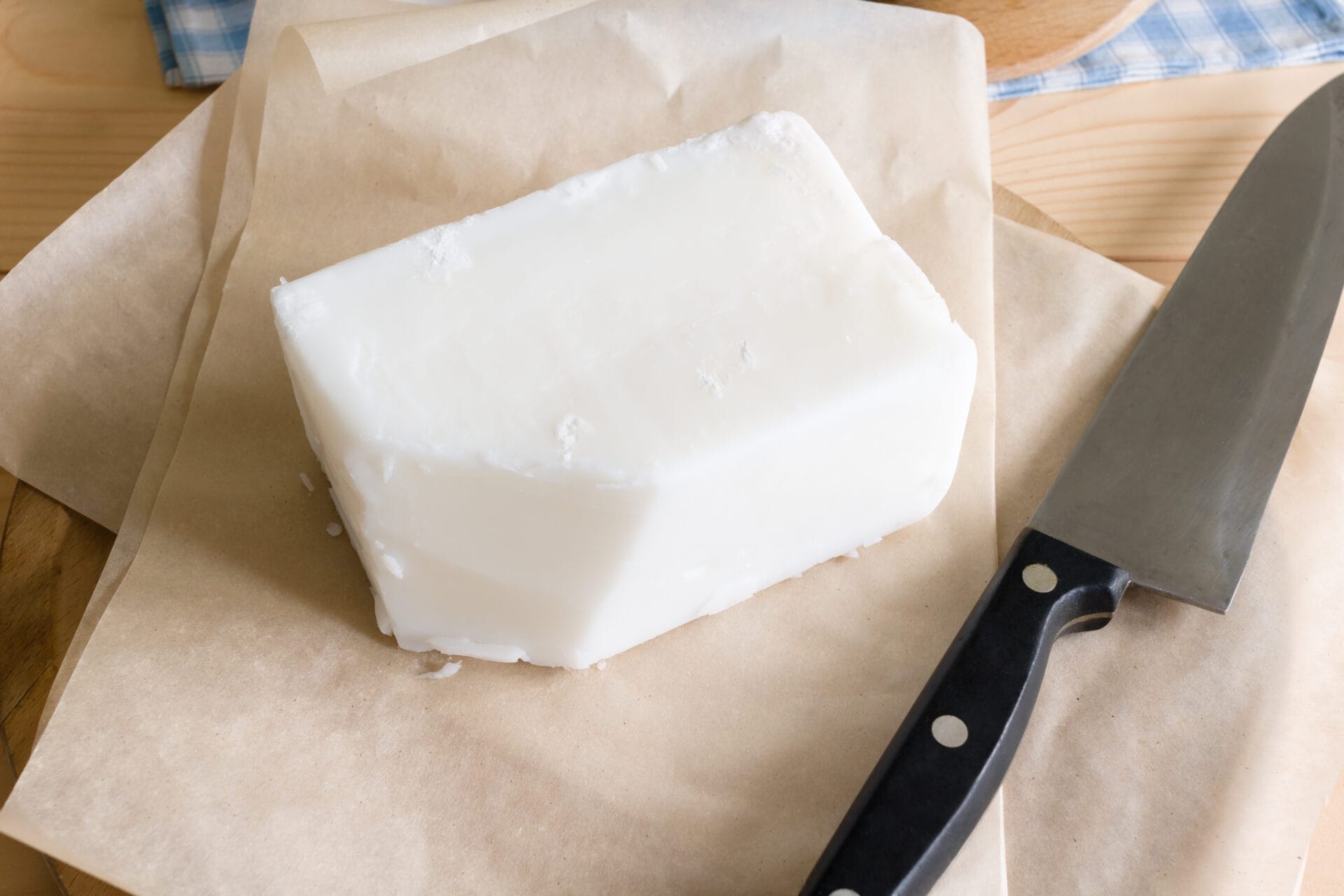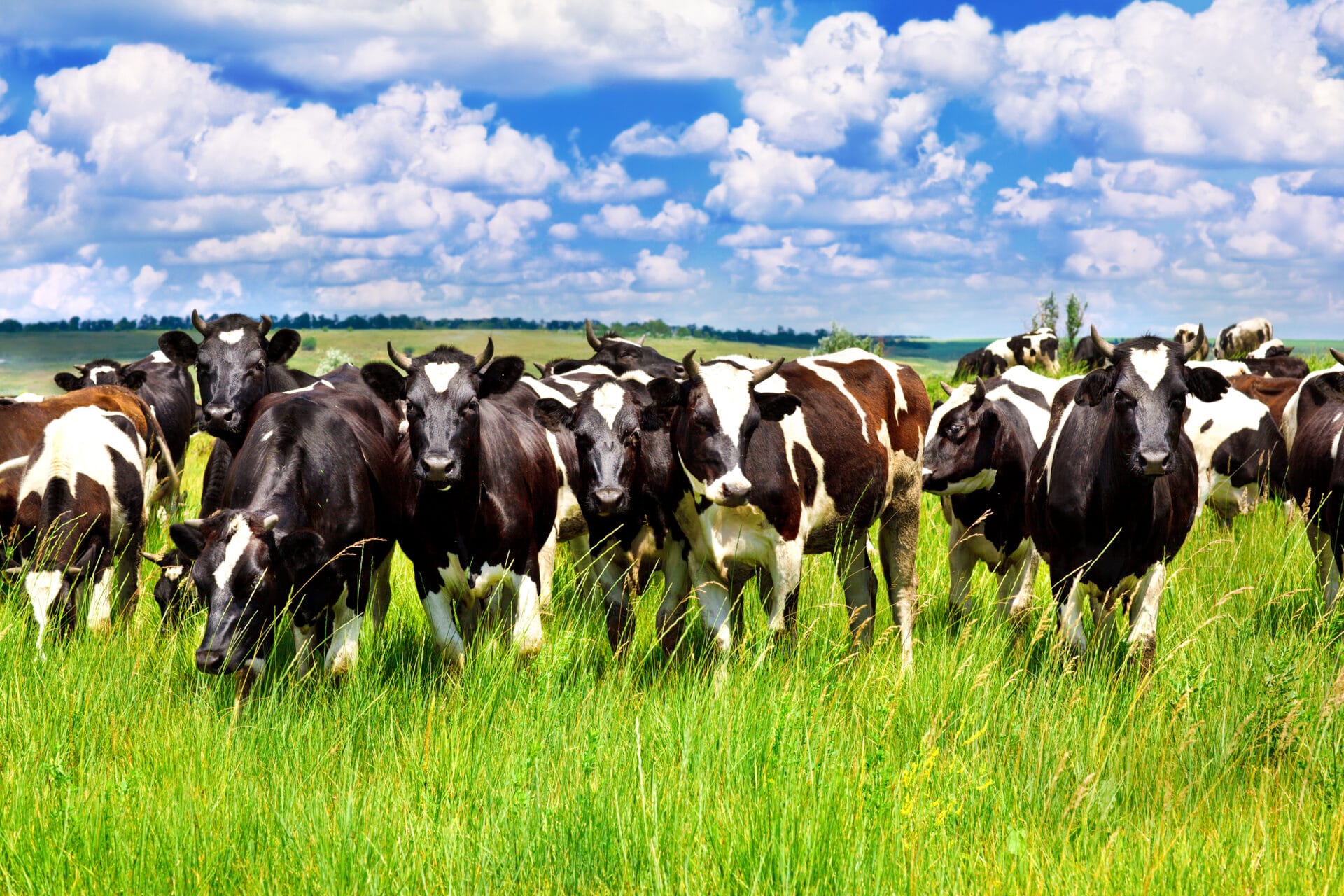Which tallows have the least toxic phthalate contamination? Tallow comes from animal fat rendered down and used for cooking and personal care products. When Mamavation sent tallow & beef suet products to our EPA-certified laboratory, many types of phthalates were found. Phthalates are hormone-disrupting chemicals often used as additives in plastics & fragrances that find their way into many foods and personal care products. You’ve trusted Mamavation to cover topics like safest olive oils tested for phthalates, safest coconut oils tested for phthalates, safest salt sans heavy metals and microplastics, safest cookware without PFAS “forever chemicals” and nanoparticles, and safest water purifiers that filter PFAS, now join us for another consumer study on tallows and hormone-disrupting phthalates.
Disclosure: This consumer study is released in partnership with Environmental Health News. Scientific reviews were performed by Linda S. Birnbaum, Scientist Emeritus and Former Director of the National Institute of Environmental Health Sciences and National Toxicology Program & Scholar in Residence at Duke University, Adjunct Professor at the University of North Carolina, & Yale University. Sondra Strand, RN, BSN, PHN, medically reviewed this post. Donations were provided by Environmental Health News and Mamavation community members. Note that Mamavation has only “spot-checked” the industry and thus we cannot make predictions about brands and products that we have not tested. Products and manufacturing aides can change without notice so buyer beware. This post contains affiliate links, with most to Amazon, which means Mamavation will receive a portion of those sales and we will use that to pay ourselves back for the testing. You can also give a tax-deductible donation to our consumer studies here through Environmental Health Sciences. Thank you! Copyright © 2024 Mamavation — All Rights Reserved

Table of Contents
Phthalates Found in Popular Tallow Products
Mamavation’s EPA-certified laboratory found phthalates in popular tallow products. These chemicals are linked to serious health effects, which we will discuss later. Because phthalates are so problematic to normal hormone action, Mamavation has commissioned our own scientific studies on phthalates in food products to make recommendations for the safest tallow for cooking and personal care. Continue reading Mamavation’s article on these products to find which brands have the lowest amounts of phthalates according to our laboratory.
For this consumer study, Mamavation sent 11 popular tallow and 2 beef suet products from 11 brands to an EPA-certified laboratory looking for phthalates. Because Mamavation only tested one product per product category, we cannot claim to know if these issues are, in fact, industry-wide or brand-wide. However, based on our “spot-check” of the industry, this is what we found:
- 62% of tallow products analyzed by our laboratory contained traces of phthalates. That’s 8 out of 13 products.
- Ranges of phthalates were from non-detect to 922 ppb, which is the total sum of phthalates. Based on the amounts presented, we created 3 categories to communicate levels of phthalates found: (1) Tallow with the most contamination; (2) Tallow with intermediate contamination; & (3) Tallow with the least contamination. These categories are not based on health impacts. They are based on what we have found and where the middle ground lies in each category.
- 15% of Tallow products had over 200 ppb total sum phthalates. That’s 2 out of 13 tallow and suet products over 200 ppb. We dubbed this the “Not Our Favorite Tallow with Highest Contamination” realm, which would have the highest amount of phthalates.
- 23% of Tallow products had between 45 ppb and 200 ppb total sum phthalates. That’s 3 out of 13 tallow products between 45 ppb and 200 ppb. We dubbed this the “Better Tallow with Intermediate Contamination” realm.
- 62% of Tallow products had below 45 ppb phthalates. That’s 8 out of 13 tallows below 45 ppb. We dubbed this the “Best Tallows with the Lowest Contamination” realm.
- Most tallow products were lower in phthalates than olive oil, avocado oil, coconut oil, or ghee.
- No phthalates were found in the raw beef suet we tested at our laboratory.
If you are using tallow for personal care or to prepare meals for your family, this investigation will be very important to follow to reduce your family’s exposure to phthalates. However, as you can see, most tallow manufacturers whose products Mamavation studied still have work to do to remove phthalates from their products. But we have some good news! There were a few tallow and beef suet products that had non-detect results for phthalates according to our laboratory.
Phthalates are typically found inside plastics and in undisclosed fragrances. When in plastics, they work to make the plastic more flexible. When they are in fragrances, they help carry the scent longer in the air. These chemical contaminants are found in many types of products that are involved in the food service industry like food service gloves, tubing used in dairy operations, hoses, holding tanks, and conveyor belts inside manufacturing plants. In fact, there are so many places where phthalates can show up because they are legal indirect food additives used in manufacturing for both conventional AND organic foods. There is some movement to restrict some ortho-phthalate chemicals from food packaging but not from manufacturing in general.
After reviewing our investigation, Linda S. Birnbaum, Scientist Emeritus and Former Director of the National Institute of Environmental Health Sciences and National Toxicology Program & Scholar in Residence at Duke University, Adjunct Professor at the University of North Carolina, & Yale University, had a few words: “It’s great news that tallow is typically lower in phthalates than olive oil, avocado oil, coconut oil, and ghee, however, we still need to bring those levels to zero, industry-wide. This widespread contamination of phthalates in the food supply needs immediate attention from companies and federal authorities. Even these low levels of phthalates can impact the health of pregnant women and children.”
Types of Phthalates Found in Our Tallow Study
Our laboratory found six different types of phthalates in the tallow we sent to them. Here’s a brief breakdown of each type of phthalate our lab found.
- Benzyl butyl phthalate (BzBP): This type of phthalate is used as a plasticizer in the production of polyvinyl chloride and other plastics. You’ll find this in sealing, coating, painting, adhesive products, and formulations. Phthalates are linked to reduced fetal testosterone indicating anti-androgenic effects in animal studies.
- Dicyclohexyl phthalate (DCHP): DCHP is a Phthalate ester (PAEs) and a type of persistent organic pollutant (POP). It’s a phlegmatizer (i.e. lowers the excitement of molecules and keeps them from exploding) and dispersion agent, used in adhesives, as a sealant or in textile printing, as a co-plasticizer in PVC, rubber, and other plastics. This phthalate is classified as toxic for reproduction and has endocrine-disrupting properties and has also been linked to high cholesterol, & cardiovascular disease. EPA designated DCHP as a High-Priority Substance in December 2019 and has been reviewing its toxicity ever since.
- Diisononyl phthalate (DINP): This type of phthalate is used as a plasticizer. The European Union has set restrictions on this chemical inside food contact materials because of the determination that it’s problematic to human health. DINP is also listed on the California Prop. 65 list of carcinogens and reproductive toxicants.
- Diisodecyl phthalate (DIDP): Found commonly in PVC plastics, artificial leather, toys, carpet backing, covering on wires and cables, and pool liners. This chemical is also on California’s Prop. 65 list of carcinogens and reproductive toxicants. It’s associated with health concerns including liver & kidney toxicity, developmental issues, endocrine disruption, reproductive issues, asthma & allergies, & thyroid problems.
- Di-2-ethylhexyl Phthalate (DEHP): DEHP is a highly toxic endocrine disruptor. It was also the most common phthalate found by our lab and is found commonly in building products (wallpaper, wire, and cable insulation), clothing (footwear, raincoats), car products, food packaging, medical devices, and children’s products (toys, grip bumpers). This chemical is also on California’s Prop. 65 list of carcinogens and reproductive toxicants. In addition, it’s been linked to endocrine disruption, reproductive issues, developmental issues, liver & kidney toxicity, asthma & allergies, & thyroid problems.
- Bis(2-propylheptyl) Phthalate (DPHP): This type of phthalate is a substitute for other high molecular weight phthalates used primarily for high-temperature applications such as cable wires, roofing membranes, and food containers. It is used to soften plastics and is a general-use plasticizer under investigation as an endocrine disruptor. This phthalate is associated with additional health concerns like reproductive toxicity, prenatal, perinatal, & post-natal toxicity, and genotoxicity.

Additional Studies Finding Phthalates in Cooking Oils
Another scientific report co-authored by our friends at Defend Our Health published in the Journal of Exposure Science & Environmental Epidemiology found phthalates in a range of popular children’s foods and organic products in 2023.
However, all coconut oils, olive oils, ghee, & avocado oils tested by Defend Our Health & Mamavation also had trace amounts of phthalates. It’s not so much a question of whether there are phthalates present in other types of cooking oils. It’s a matter of what levels are present. All of our previous studies confirmed that these cooking oils have varying levels of phthalates present.
- View our consumer study on olive oils here.
- View our consumer study on coconut oils here.
- View our consumer study on avocado oils here.
- View our consumer study on ghees here.
Phthalates Have Specific Problematic Health Effects
Phthalates are linked to many health effects from several studies on both animals and humans. This is very problematic because phthalates are linked with disruption of the endocrine system, which regulates the body’s hormones, even in trace amounts in low concentrations. Epidemiological studies have revealed that exposure to phthalates adversely affects the level of hormones within the body, which can impact many important health functions. Here are some health effects phthalate exposure is linked to.
- Weight gain & obesity
- Shorter height
- Precocious puberty
- Asthma
- Allergies
- Attention Deficit Hyperactivity Disorder (ADHD)
- Lower IQ
- Social impairment
- Type II diabetes and insulin resistance
- Poor cardiovascular health
- Thyroid function
- Increased risk of thyroid cancer
- Females: pregnancy loss and preterm birth, low birth weight, earlier menopause
- Males: genital development, semen quality, reduced “masculine” play, Inhibits testosterone production, Shortened anogenital distance, or shortened “taint” , Shortened length of penis
How are Phthalates Regulated in the Food Supply & Children’s Products?
Because phthalates are so problematic to human health, there are varying restrictions on products and food at the federal level. There is, however, no consistency among federal agencies to protect the public. For instance, the U.S. Consumer Product Safety Improvement Act (CPSIA) restricts certain phthalates within children’s toys and childcare products. They prohibit the import and sale of those products that contain more than 0.1% of the following phthalates:
- di-(2-ethylhexyl) phthalate (DEHP)
- dibutyl phthalate (DBP)
- benzyl butyl phthalate (BBP)
- diisononyl phthalate (DINP)
- diisobutyl phthalate (DIBP)
- di-n-pentyl phthalate (DPENP)
- di-n-hexyl phthalate (DHEXP)
- dicyclohexyl phthalate (DCHP)
Even though the U.S. Consumer Product Safety Commission restricted 8 ortho-phthalates in products intended for use by children, you still see some of the same chemicals approved as indirect additives by the FDA in the food supply even when those foods are marketed to children. Furthermore, the FDA denied a citizen petition in 2022 which demanded to take these phthalate chemicals out of the food supply because they impact the hormones of children.
California also has some restrictions under the Prop. 65 list of Carcinogens and Reproductive Toxicants, requiring products sold over the limits to be accompanied by a warning. Any consumer living in California who tests and finds products with specific phthalate amounts outside the limits may bring a Prop. 65 lawsuit six months after serving the company with a public notification letter. However, be advised these limits are not enforceable. California’s “right to know” law is only about warning the consumer about the carcinogenic chemicals present. Therefore, California cannot force companies to recall products that are above these limits. Here are the phthalate-criteria:
- BBP – Maximum Allowable Dose Levels (MADL) 1,200 μg/day (oral) (Note: ug = a microgram = 1 millionth of a gram. 1 gram = 0.035 oz.)
- DBP – MADL 8.7 μg/day
- DIDP – MADL 2,200 μg/day
- DnHP – MADL 2,200 μg/day
- DEHP – No Significant Risk Level (NSRL) 310 μg/day (adult), MADL 4,200 μg/day (intravenous adult), MADL 600 (intravenous infant), MADL 410 ug/day (oral for adult), MADL 58 ug/day (oral for infant).
- DINP – NSRL 146 μg/day
It could be possible that the vast majority of phthalates are finding their way into the product during manufacturing, storage, or transportation. Under the Food & Drug Administration 21 CFR rules, FDA regulates food, drugs, cosmetics, and food contact materials within the United States. The FDA sanctioned the use of 25 plasticizers via an amendment to food additive regulations: 21 CFR Part 175 through 21 CFR Part 178. These regulations allow the use of phthalates in the food supply as “indirect food additives” that can be present. These chemicals can find their way into your food in many ways during manufacturing such as:
- Adhesives and components of coatings used in food contact materials;
- Components of paper and paperboard, such as paperboard that is in contact with aqueous and fatty foods or used as a defoaming agent on the paperboard;
- Adjuvants, production aids, and sanitizers used in manufacturing;
- Plasticizers in polymeric substances, such as phthalates in plastic PVA or PVC sheets in food contact materials OR vinyl chloride homopolymers or copolymers used in food contact materials;
- Surface lubricants used to make metallic products.
Other Categories of Products Mamavation Has Tested for Toxic Contaminants
Before we launch into the raw data from our lab, we wanted to remind you about all the other studies we have done on indications of PFAS “forever chemicals,” pesticides, & heavy metals inside the food and consumer products you may bring inside your home. Each one of these studies were done in a similar fashion as this study with brands sent independently to the certified lab and raw data of those labs at the bottom of the post.
- Soft Contact Lenses
- Green Beauty Makeup
- Lip Balm
- Condoms & Lubricants
- Dental Floss
- Toilet Paper
- Tissue Paper
- Period Underwear
- Tampons
- Sanitary Pads, Pantiliners, & Incontinence Pads
- Powdered Electrolytes
- Cinnamon
- Salt
- Butter Wrappers
- Pasta & Tomato Sauces
- Nut Butters (Peanut butter, etc.)
- Coffee
- Olive oils
- Coconut oils
- Avocado oils
- Ghees
- Ketchup
- Activewear (Yoga Pants)
- Sports Bras
- Parchment Paper
- Cupcake Liners
- Plastic-Free Straws
- Sandwich Baggies (Both plastic & more “sustainable” options)
- Fast Food Packaging
- Furniture
- Children’s Probiotics
- Kids’ Backpacks
- Baby Strollers
- Baby Bottles

Mamavation’s Investigation of Tallow & Phthalates
For this study, tallow & beef suet were purchased between August 2023 and August 2024. Each product was recorded in our database and sent directly to the lab within its original packaging. Mamavation’s EPA-certified lab tested for the following phthalates. This is not a complete list of all the phthalates that are allowed to be present as an indirect food additive according to the FDA, however, this list goes above and beyond what is already restricted by the European Union or the State of California and mirrors what was tested in 2023 by Defend Our Health.
- Diethyl phthalate (DEP)
- Di-n-propyl phthalate (DPP)
- Diisobutyl phthalate (DIBP)
- Dibutyl phthalate (DBP)
- Dihexyl phthalate (DnHP)
- Benzyl butyl phthalate (BBP)
- Dicyclohexyl phthalate (DCHP)
- Diisononyl phthalate (DINP)
- Di-n-octyl phthalate (DnOP)
- Diisodecyl phthalate (DIDP)
- bis(2-Ethylhexyl)phthalate (DEHP)
- Dimethyl phthalate (DMP)
- Bis(2-propylheptyl) Phthalate (DPHP)
- Didecyl phthalate (DDP)
Mamavation’s Raw Data on Phthalates in Tallow & Beef Suet
Tallow with the Most Contamination of Phthalates
Over 200 ppb total sum of phthalates.
- Fatworks Pure Tallow Organic Cooking Oil made from 100% Grass-fed Beef — 922 ppb total sum phthalates
- Epic Rendered Beef Tallow Grass-fed Time honored cooking fat — 782 ppb total sum phthalates
Tallow with Intermediate Contamination of Phthalates
Between 45 ppb and 200 ppb of total sum of phthalates.
- Renderings Beef Tallow — 47 ppb total sum phthalates
- South Chicago Packaging Wagyu Beef Tallow — 58 ppb total sum phthalates
- Santa Cruz Paleo Beef Tallow — 68 ppb total sum phthalates
Tallow with the Least Contamination of Phthalates
Less than 45 ppb of total sum phthalates.
Tallow for Cooking
- Essential Depot Beef Tallow — 27 ppb total sum phthalates
- Fatworks Lamb Tallow — non-detect
- Fatworks Bison Tallow — 8 ppb total sum phthalates
- PaleoValley Grass Fed Beef Tallow — 41 ppb total sum phthalates (Take 15% off products at PaleoValley by using this link)
Tallow For Personal Care
- Bello Tallow Pure Tallow — non-detect (Use discount code “MAMAVATION” for 10% off products!)
- Traditional Nutrients Tallow — non-detect
Beef Suet For All Purposes (Non-Rendered Tallow)
- Parker Pastures Beef Suet — Non-detect (Get $25 off your first order of $150 or more by using discount code “WELCOME”)
- White Oak Pastures Beef Suet — Non-detect (Get $20 off any order over $150. One use per customer. Use “MAMAVATION” at checkout or click on link for it to be automatically applied.)









 Safest Non-Toxic & Natural Pillows for the Whole Family– Gift Guide
Safest Non-Toxic & Natural Pillows for the Whole Family– Gift Guide
Is Primally Pure a good brand to use? I don’t see that they were tested. Thank you!
Watch, play, and repeat with iSerialeTV—streaming live TV, sports, and endless movies in one smart platform.
https://iserialetv.net
Thanks for exposing phthalates in tallow! I’m sharing this with my wellness group—Parker Pastures is the way to go. How can we push brands to clean up their supply chains?
Have you tested flying cow?
Hopefully, effective ways will be found to control the levels of phthalates in current products.
The highest rated beef tallow seems to come in a plastic container (I want to avoid microplastics too). Is there a safe glass-container alternative? Is The Beef Tallow Company good?
The highest rated beef ones seem to be in plastic containers (I want to avoid microplastics too). Which is a safe glass-container alternative? Is The Beef Tallow Company good?
This research on phthalates in tallow is incredibly valuable! I had no idea these hormone-disrupting chemicals were so prevalent in animal fats. I’ll definitely be switching to one of the non-detect options for both cooking and skincare. Thank you for doing this important testing work!
Have you posted your actual lab testing results? I’m interested in seeing the lab provided verification of these claims.
Thank you!
So grateful for you Leah. Thank you, and thank you hundreds/thousands of times.
It’s interesting to know that tallow generally has lower levels of phthalates than many other vegetable oils, but efforts are still needed to completely reduce this contamination!
Hi, thanks for sharing. I do not use ANY oils of any kind in cooking. They
have empty nutrition and 120 calories per T. I cook with water and spices.
Second, poultry products are known to be high in Phtalates.
Phtalates are HIGHLY ESTROGENIC as they are ENDOCRINE DISRUPTORS by the way.
I mainly use vegetable oil now and no longer use animal fat.
Vegetable oils are extremely toxic. It’s a mistake to include essential and healthy fats such as those that come from animals.
While this study cannot predict contamination levels for all brands, it emphasizes that minimally processed, organic, and small-batch tallow products are likely to have the least phthalate contamination. Always check for third-party testing and certifications where possible to ensure that the tallow you are using is free from harmful chemicals like phthalates.
It makes sense that minimally processed, organic, and small-batch tallow products are likely to have the least phthalate contamination. but what about small batch tallow poured into plastic containers? Do you know if the tallow if heated first, which might degrade and leech from the container into the tallow?
Surprised you didn’t test 4th and Heart, the one in the glass jar. It’s quite popular. Hope you guys can include that in your next test 🙂 keep up the good work
Yes! Would love to see 4th & Heart, FOND, and Lineage Provisions tallow tested.
JK – 4th & heart is ghee, not tallow! Right?? And Leah tested it in her ghee investigation 🙂 https://mamavation.com/food/ghee-toxic-phthalates-guide.html#Mamavations_Investigation_of_Ghees_Phthalates
Still would love to see FOND & Lineage Provisions TALLOW tested as both are premium 100% grassfed brands.
Thank you very much for what you do! I made many changes regarding oils and butter in our family. Now have to change beef tallow (we used Epic brand). The only oil we currently use is Flax oil by Barleans’s. Could you please also consider testing flax oils? Thank you!
So grateful for you Leah. Thank you, and thank you hundreds/thousands of times.
Hi, would any of these be likely to have heavy metal contamination? I want to use on my baby but am nervous to try without knowing.
It’s interested that the brands they DO recommend, they have an affiliate link for. Seems fishy.
Or, it could be because they only want to recommend the safest ones, & it’d be disingenuous to recommend ones with more harmful chemicals.
But, it IS good to be cautious about stuff like that. Links to the direct results or other records of these tests would be ideal.
Have you posted your actual lab testing results? I’m interested in seeing the lab provided verification of these claims.
Thank you!
Or, it could be because they only want to recommend the safest ones, & it’d be disingenuous to recommend ones with more harmful chemicals.
But, it IS good to be cautious about stuff like that. Links to the direct results or other records of these tests would be ideal.
Yes please! I have the same concerns.